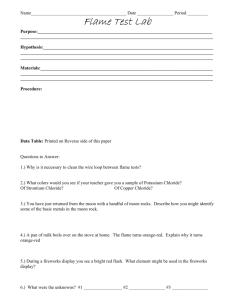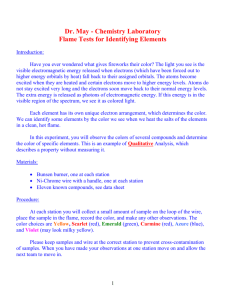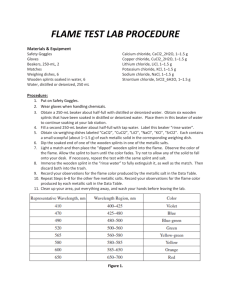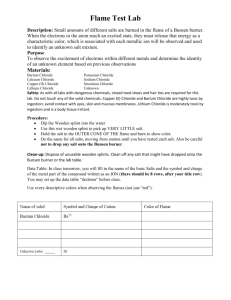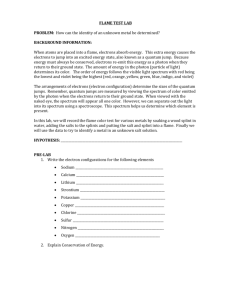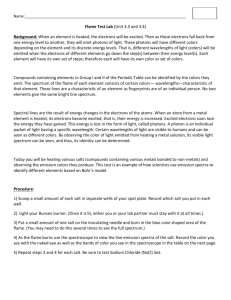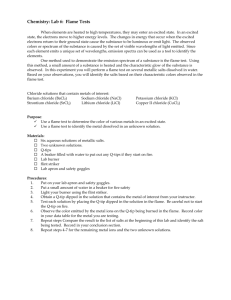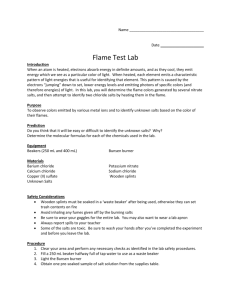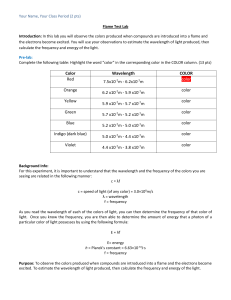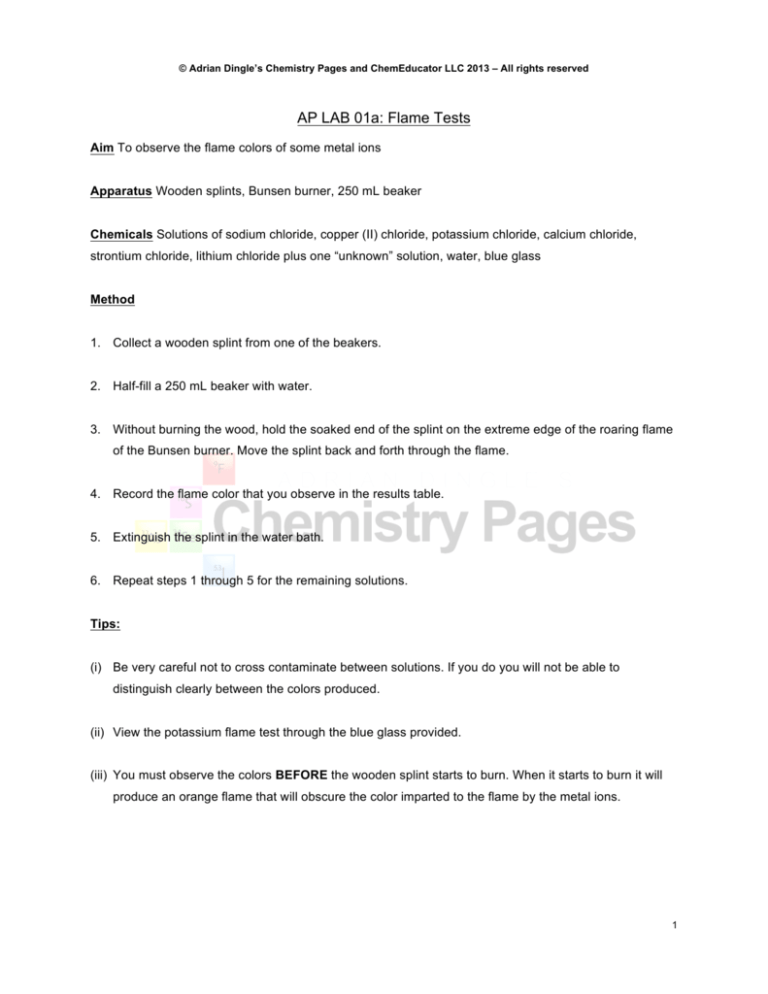
© Adrian Dingle’s Chemistry Pages and ChemEducator LLC 2013 – All rights reserved
AP LAB 01a: Flame Tests
Aim To observe the flame colors of some metal ions
Apparatus Wooden splints, Bunsen burner, 250 mL beaker
Chemicals Solutions of sodium chloride, copper (II) chloride, potassium chloride, calcium chloride,
strontium chloride, lithium chloride plus one “unknown” solution, water, blue glass
Method
1. Collect a wooden splint from one of the beakers.
2. Half-fill a 250 mL beaker with water.
3. Without burning the wood, hold the soaked end of the splint on the extreme edge of the roaring flame
of the Bunsen burner. Move the splint back and forth through the flame.
4. Record the flame color that you observe in the results table.
5. Extinguish the splint in the water bath.
6. Repeat steps 1 through 5 for the remaining solutions.
Tips:
(i) Be very careful not to cross contaminate between solutions. If you do you will not be able to
distinguish clearly between the colors produced.
(ii) View the potassium flame test through the blue glass provided.
(iii) You must observe the colors BEFORE the wooden splint starts to burn. When it starts to burn it will
produce an orange flame that will obscure the color imparted to the flame by the metal ions.
1
© Adrian Dingle’s Chemistry Pages and ChemEducator LLC 2013 – All rights reserved
Results
Solution
Flame Color
sodium chloride
copper(II) chloride
potassium chloride
calcium chloride
strontium chloride
lithium chloride
UNKNOWN
2
© Adrian Dingle’s Chemistry Pages and ChemEducator LLC 2013 – All rights reserved
Conclusion/Calculation
Read the following paragraph below before answering the questions that follow.
The normal configuration of the electrons about the atom or ion of an element is called “the ground state”. The
electrons of this stable particle are at their lowest possible energy level. However, when these stable particles
are heated to very high temperatures, some of the electrons leave their “ground state” and become “excited”;
that is, these electrons move to a higher energy level. They do so by absorbing heat energy. This "excited" state
is unstable and the tendency of these “excited” electrons is to return to their “ground state”. As these electrons
return to the “ground state” they release the absorbed heat energy in the form of electromagnetic energy. Some
of this released energy falls in the visible light region of the electromagnetic spectrum. The energy released in
this region of the spectrum will be in the form of visible light possessing color. A red color light possesses low
energy, while a violet color light possesses high energy. The color of the visible light released can confirm the
identity of an element. This technique of confirmation is called a flame test. Metallic atoms and ions possess
electrons that are easily “excited”. This being the case, the flame test is a quick, simple technique to help identify
a particular metal.
1. From your results which substances were more difficult to distinguish from one another and explain
why it was so?
2. Based on your results, which metal ion was most likely present in the unknown solution?
3. Identify two things that people may have done incorrectly that would have caused them to get totally
different answers from the rest of the class. Be specific about what might have been done.
(i)
(ii)
3
© Adrian Dingle’s Chemistry Pages and ChemEducator LLC 2013 – All rights reserved
4. Will an electron stay in an excited state without outside energy (e.g. a flame)? Explain.
5. Green light has a wavelength of around 485 nm. How much energy does a photon of green light
possess?
4

